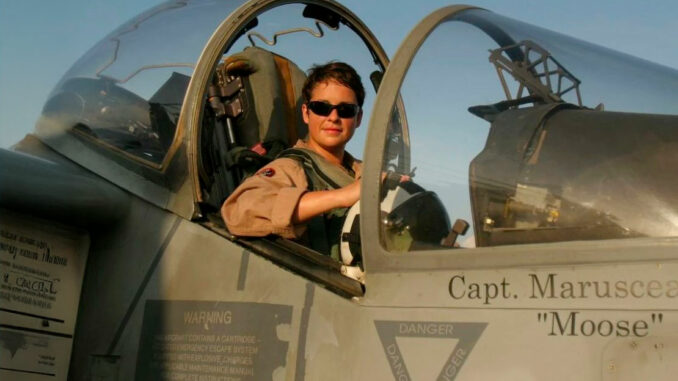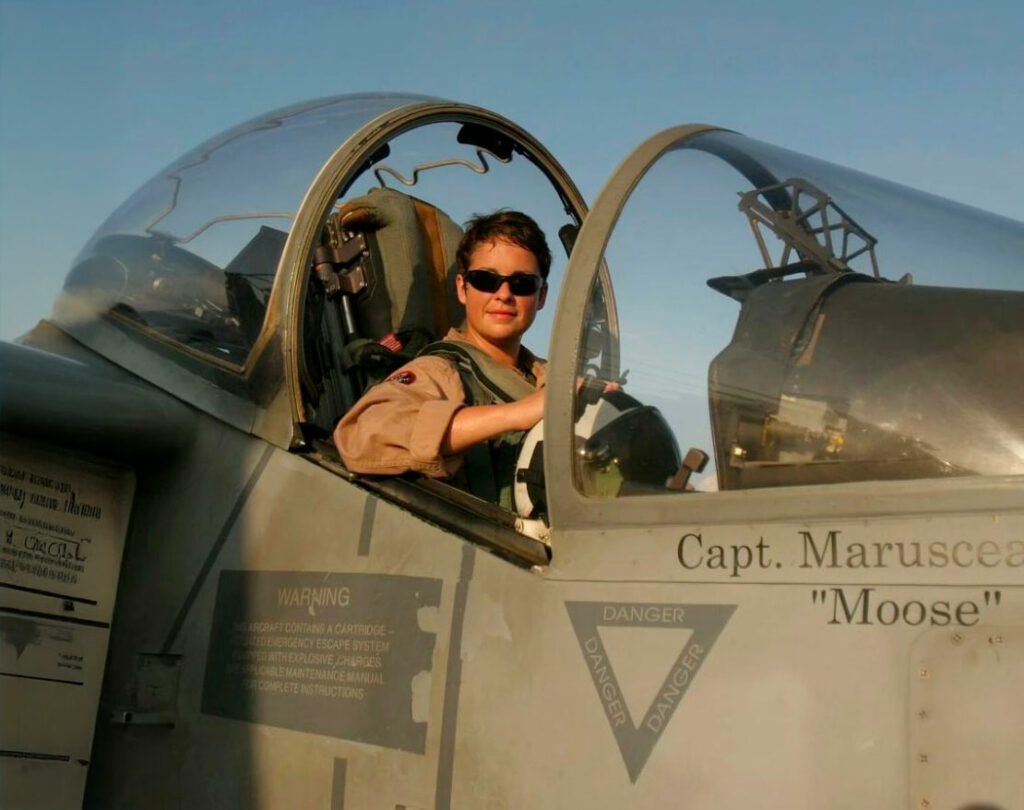
Analysis of fighter pilot training methods to effectively manage loss of control in flight.
The ability of a fighter pilot to react effectively to a loss of control in flight is crucial. These situations, although rare, require rigorous preparation to ensure the safety of the crew and the success of the missions. This article examines the training methods in place to prepare pilots to manage these incidents, with an emphasis on recovery techniques and specialized training programs.
Advanced UPRT training: a pillar of fighter pilot safety
Upset Prevention and Recovery Training (UPRT) is an essential component of fighter pilot training, aimed at preventing and managing situations of loss of control in flight. This program combines theoretical instruction and practical exercises to strengthen pilots’ skills in extreme conditions.
The objectives of UPRT
The aim of UPRT is to familiarize pilots with the atypical behavior of fighter planes, such as unusual attitudes, stalls or spins. By understanding the factors that can lead to a loss of control, pilots are better prepared to anticipate and correct these situations.
The components of the training
UPRT training is divided into several phases:
- Theoretical instruction: pilots study aerodynamic principles, human factors and recovery procedures.
- Simulator simulations: pilots practice managing loss of control scenarios in a safe environment, allowing them to repeat procedures without risk.
- Training flights: pilots put the techniques they have learned into practice during real flights, under the supervision of experienced instructors.
The importance of continuous training
UPRT training is not a one-off event, but a continuous process. Fighter pilots must regularly update their skills to maintain an optimal level of preparedness. Refresher sessions are organized to integrate the latest technological developments and operational feedback.

Flight simulators: an indispensable tool for training in critical situations
Flight simulators play a central role in preparing fighter pilots to manage loss of control in flight. These devices faithfully reproduce flight conditions and enable pilots to be trained to react effectively in complex situations.
The characteristics of simulators
Modern flight simulators offer total immersion thanks to:
- Advanced motion systems: reproducing the physical sensations of flight.
- Realistic visual environments: allowing simulation of various weather conditions and emergency situations.
- Control interfaces identical to those of fighter planes: ensuring a smooth transition between training and real missions.
The advantages of simulator training
The use of simulators has several benefits:
- Safety: pilots can practice managing dangerous situations without risk to their lives or the lives of others.
- Flexibility: scenarios can be adapted to target specific skills or particular situations.
- Evaluation: pilot performance is recorded and analyzed to identify areas for improvement.
Integration into training
Simulator sessions are integrated at different stages of fighter pilot training, from initial learning to advanced training. They complement real flights by providing a controlled environment to develop and refine the skills needed to manage loss of control in flight.

Adaptation of procedures according to fighter aircraft profiles and operational missions
Recovery procedures in the event of loss of control are not uniform for all fighter planes. Each model has specific aerodynamic characteristics that influence the behavior of the aircraft in critical situations. Therefore, training must be adapted to the type of aircraft used, but also to mission profiles.
The influence of design and aerodynamics
A Rafale B or Rafale C, for example, has a delta-canard configuration with a forward center of gravity, which promotes agility but requires permanent active control by an electric flight control system. These systems incorporate specific piloting laws that prevent the pilot from exceeding certain angles of attack or load factor limits.
This does not mean that a loss of control is impossible, but the degraded modes (direct law or alternative law) expose the pilot to more complex dynamic behavior. The training therefore includes specific exercises for these regimes.
On the other hand, an F-16 Fighting Falcon, with its natural longitudinal instability, is particularly sensitive to rapid changes in attitude. Pilots must be trained to react to asymmetrical spin departures, especially at high altitude or after an aggressive offensive maneuver.
On an F-35 Lightning II, the stakes are different: the control systems are highly assisted, but the sensors can be deceived by complex atmospheric conditions. A return to manual mode requires specific training to manage unpredictable dynamic behavior without a digital assisted interface.
Specific procedures according to flight regimes
Loss of control does not only occur during aerobatic maneuvers. It can also occur:
- during slow flight phases,
- following an incorrectly aligned in-flight refueling,
- during an interception in wake turbulence,
- or after exiting a high-incidence turn.
In this respect, the example of the crash of a Mirage 2000-5 in 2019 illustrates the difficulty of regaining control after an interaction with wake turbulence during a maneuver. The aircraft had encountered an excessive attitude that was not corrected in time.
Training must therefore incorporate these specific conditions. On the simulator, the scenarios now include simulations of vortices generated by a larger aircraft or wind shear situations at low altitude.
Incorporating mission parameters
The mission profile has a strong influence on the type of risk to which the pilot is exposed. A supersonic interception mission does not involve the same constraints as a ground support mission.
In SEAD (Suppression of Enemy Air Defenses) missions, a fighter pilot may be forced to maneuver abruptly to evade a missile. In these situations, the risk of exceeding the flight envelope (over-G or over-incidence) is high.
For Rafale or Eurofighter Typhoon pilots assigned to these missions, recovery procedures must be integrated into tactical training and not just into technical modules. Returning to a stable attitude is not enough: tactical awareness must also be maintained in order to continue the action or evacuate the airspace.
Reflection on the limits of automation
The automation of controls and the proliferation of piloting aids may have reduced the frequency of loss of control incidents, but they have introduced a growing dependence on on-board systems.
A pilot who is poorly trained to fly “by direct law” may be surprised by the brutality of the reactions of the aircraft without a digital filter. However, inertial unit failures or sensor conflicts are still possible events.
The logic of modern training must therefore maintain a robust manual piloting capability, even in fleets equipped with high technology. Operational reality dictates that the fighter pilot must be able to regain control in unstable conditions, with sometimes blurred bearings and degraded resources.

Operational feedback and the limits of training in the face of loss of control
Operational experience feedback (OEF) is a fundamental source of adjustment for fighter pilot training programs. Despite the sophistication of simulators and UPRT programs, loss of control in flight (LOC-I) events continue to occur, particularly in operational contexts where the environment is unstable, the parameters partial, and the cognitive load maximum.
Analysis of real incidents: situations that do not conform to the scenarios
Several military and civilian investigations have revealed that loss of control is rarely due to a single factor. In more than 60% of the cases documented in military aviation, LOC-I incidents are the result of a chain of events involving mental load, weather conditions, error of judgment and lack of knowledge of the behavior of the aircraft in certain configurations.
A striking example is the crash of the YF-22 prototype in April 1992 during a landing at Edwards AFB. The plane entered an unstable state at low speed after an excessive pitch command. Recovery was not possible despite the responsiveness of the test pilot. The feedback made it possible to modify the flight control laws to avoid this type of behavior.
Similarly, Air France Flight 447 (although it was not a fighter plane) had a direct impact on the revision of UPRT procedures: the role of spatial disorientation and automatisms was highlighted, also influencing military training.
The human factor: cognitive overload and impaired decision-making
Even when trained, a fighter pilot in operation can be confronted with a phenomenon of attentional tunneling, i.e. focusing on one parameter (speed, angle, radar) to the detriment of overall spatial cues.
Studies conducted within the USAF indicate that 30% of fatal LOC-I cases between 2000 and 2020 in F-16s and F-15s resulted from poor cognitive judgment in the 5 seconds following entry into an abnormal attitude. Pilots do not always apply the procedures they have learned because operational stress alters reflexes.
Hence the value of working with “non-scripted” simulators, capable of generating unforeseen or evolving situations without prior indication, in order to test spontaneous recovery capacities in overloaded cognitive contexts.
Recent statistics: evolution but persistence of risk
According to the NATO Safety Database, loss of control is responsible for 15% of fighter aircraft losses over the period 2010-2020. Among air forces using Rafale, Typhoon or F-18, the trend is downward, but the risk remains whenever a flight goes off course (breakdown, combat, extreme weather conditions).
The introduction of automatic recovery devices, such as the Auto-GCAS (Ground Collision Avoidance System), has prevented several crashes, particularly in the USAF where at least 10 F-16 pilots were “saved” by this technology between 2014 and 2019. But this automation only works under very specific conditions.
Towards a redesign of programs: stress, uncertainty, adaptation
Western air forces are currently revising their UPRT curricula to integrate new modules:
- multi-variable scenarios (weather/breakdown/error combination),
- introduction of fatigue and stress in simulators,
- adaptation according to the cognitive profiles and experience of the pilot,
- training with voluntary interruption of data (HUD failures, loss of ADF, repeated audible alarm).
The aim is to recreate the uncertainty of combat or real tactical flight, and to force the pilot to prioritize actions. This also requires an increase in the competence of the instructors themselves, who must know how to generate and correct errors without being satisfied with standardized procedures.
The management of loss of control in flight among fighter pilots is based on a technological, physiological and tactical foundation. The quality of training, adaptation to the aircraft profile, taking human limitations into account and integrating operational experience feedback are essential conditions for reducing losses due to these critical situations. But no procedure can compensate for a lack of attention, judgment or reflexes under stress.
War Wings Daily is an independant magazine.